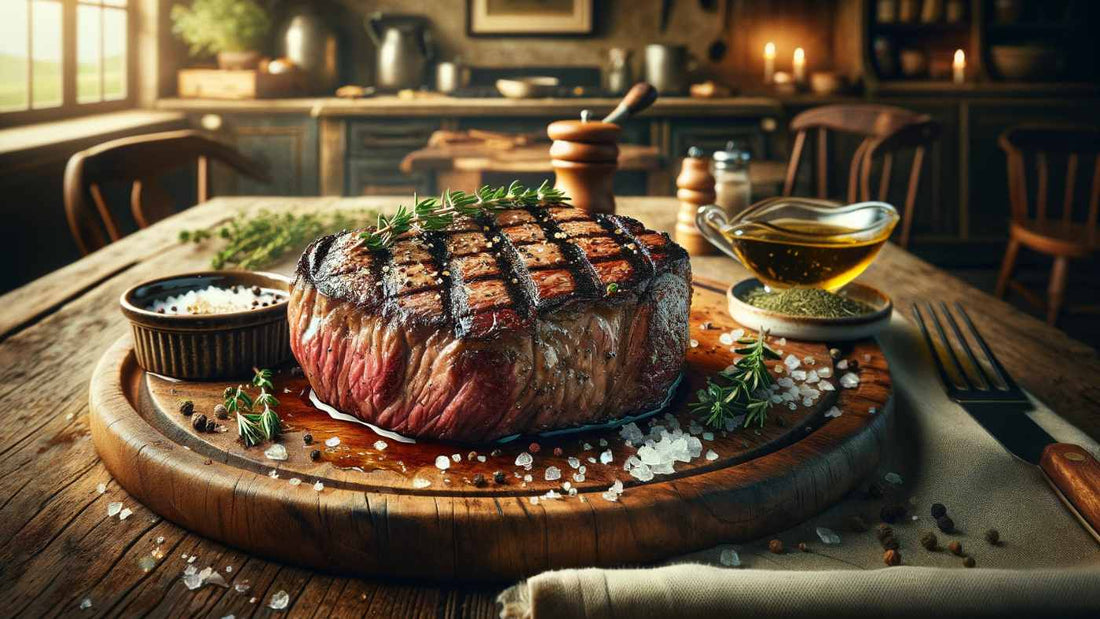
Why Beef Tastes Different at Restaurants?
Share
Have you ever dug into a pricey steak in a restaurant and felt it tasted a bit off?
The off-flavor your taste buds picked up—that veers from the gamey flavor you're used to - probably had nothing to do with how it was seasoned or grilled.
Sometimes, the difference in taste might be so subtle that only a sensory panel can spot it.
You might even be tempted to assume it's just your taste buds acting up, but it's as accurate as the sun.
Check this out: Near a small dairy farm in Hobart, Tasmania (a city in Australia), a Cardbury chocolate factory creates some delicious chocolates.
The farmers started giving unused, leftover chocolates to their dairy cows.
Not too long after, they started getting rave reviews of the dairy milk, which now tastes naturally of chocolate.
What factors alter the taste of animal products like milk and beef?

Dieting
If you guessed the first factor to be dieting, you're 100% right! When it comes to the taste of meat cuts, it's very much garbage in, garbage out.
First, I always advocate for all cattle to be grass-fed, but even in that 'strata,' there are still cuts that taste juicier thanks to the kinds of grass they consume.
Research at a food research facility in Finland discovered that switching the grass a group of cows ate to red clover produced more omega-3's in the fat content of their meat.
Omega 3 contributes to beef's gamey, nutty flavor by trapping in the flavor volatiles as your steak sears away.
Flavor volatiles are the main compounds that enhance the taste of your beef.
In another study, meat lipids from grass-fed lamb showed much higher levels of omega 3's compared to concentrate-fed lamps.
In a sensory analysis test involving grass-fed and concentrate-fed Hereford, the grass-fed breed showed higher amounts of a flavor volatile that ranked top in the sensory chart for flavor intensity (aka really gamey, juicy cut).
Marbling
Healthy, pastured animals not speed-fatted on corn and soy have different fat qualities.
If you lay your cut of beef on a tray on your kitchen countertop and observe it closely, you'll notice thin white flecks of fat snaking within the muscles like veins.
Desirable cuts of steak like Japanese Wagyu and Kobe have fine marbling, meaning their flecks of fat quickly melt while grilling and add juiciness to the meat.
Cuts with coarse marbling, on the other hand, have larger flecks of fat that take longer to render.
If you like your steak medium-rare and get a coarse marbling cut, the significant fat won't render in time to add juiciness to the steak when it's ready.
Age
Veal (aka meat from a young cattle, say a bison's calf) is known for its tenderness because the muscles haven't had much opportunity to develop and toughen.
It gives off a mild, delicate flavor.
On the other hand, adults are mature Beef has a more substantial, beefier flavor than veal; this is partly due to the development of muscle and increased physical activity in older animals.
The muscles in mature beef have had more use, resulting in a firmer texture.
How can you improve the flavor of your homemade steak?
 Are you familiar with the concept of the Maillard reaction?
Are you familiar with the concept of the Maillard reaction?
Simply put, it's a reaction that occurs when you're searing a piece of steak.
Amino acids and sugar react to create that nicely browned look that gives off explosive flavors; it'll make your steak melt on your tongue (yum!).
So, how do you initiate the Maillard reaction? You need the right amount of heat, time, and moisture.
Pat-dry your meat with towels and salt it roughly an hour before cooking (this gives the salt enough time to draw out the water through osmosis and leave it at just the proper moisture and tenderness).
Viola! Your meat will be ready to brown and give off some mouth-watering flavors.



